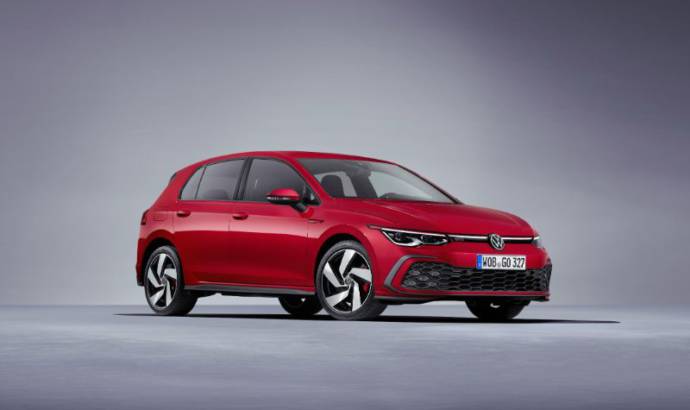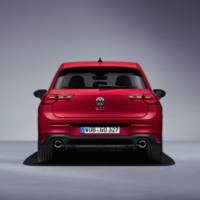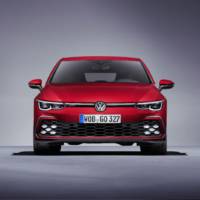Volkswagen Golf is one of the most iconic cars in the world. It’s sporty version, the Golf GTI, is almost as iconic as the standard model, because was first introduced a very long time ago. Now, as the conventional model, the GTI version reaches the eight generation.
Volkswagen unveiled the eighth-generation Golf GTI at the Geneva Motor Show, alongside its hybrid GTE and diesel GTD siblings. The new vehicles offer more power, an innovative driver interface, and more modern design, both inside and out.
The new Golf GTI is an agile, raw, efficient and high-tech compact sports car for the digital age, with 245 horsepower (180 kW).
With an identical output of 245 hp, the new Golf GTE is just as powerful as the Golf GTI. The hybrid drivetrain is designed for sporting performance and combines electrical sustainability and zero-emissions range of around 37 miles (60 kilometers) with great dynamic performance.
The new Golf GTD is a real endurance athlete. In this variant, an output of 200 hp (147 kW) has been coupled with very long range between refueling.
The design of the new, sporty Golf models is charismatic. The standard LED headlights are positioned low down and form a striking crossbar in conjunction with the radiator grille. Towards the top of the hood, a narrow line spans the front end—red in the case of the GTI, blue for the GTE and silver for the GTD.
Once the daytime running lights are activated, such as when the driver approaches with the key, an LED strip in the headlight mirrors the red, blue or silver line. As standard, the radiator grille is illuminated as a continuation of the LED strip for the first time. This creates the completely new, unmistakable headlight design of the Golf GTI, GTE and GTD.
The side profiles features the eye-catching, standard 17-inch Richmond aluminum-alloy wheels, unique to the GTI. Optional 18-inch or 19-inch rims are available. The brake calipers on the new, sporty Golf models are painted red. The GTI and GTD also carry a badge with their respective lettering on the side of the front fender. The GTE instead has a cover on the passenger side for charging the battery. All three models feature wider side skirts sills in black and a race-car-style splitter design. A spoiler extends the roof line at the back of the car. The dominant design element of the side section is the characteristic Golf C-post that visually propels the vehicle body forwards and transposes the iconic graphics of the original Golf and GTI into the modern era.
The sport steering wheel of yesteryear has been transformed into a new multifunction leather sport steering wheel with touch controls and an available Travel Assist button to help the powerful Golf models reach a top speed of 130 mph while Travel Assist is engaged.
The three silver spokes have been retained, with a red central spoke for the GTI, blue for the GTE and silver for the GTD. The classic plaid covering for the sport seats is also kept, but in a new checked design called Scalepaper. The seams of the gray and black design are red in the GTI, blue in the GTE and light grey in the GTD. Red, blue or black are also used for all decorative seams and edging, depending on the model.
The Innovision Cockpit extends upwards upon opening the doors in the Golf GTI, GTE and GTD. It is a fusion of the top-of-the-range version of the 10.25-inch Digital Cockpit and the 10-inch navigation system. The visual and functional blend of the two screens creates a new and consistent digital architecture.
Volkswagen has developed and perfected the running gear of the Golf GTI, GTE and GTD with the combination of a strut-type front and a multi-link rear suspension. A new driving dynamics control system known as the Vehicle Dynamics Manager is used for the first time. The system controls both the XDS function and the lateral functionality of the DCC adaptive damping system, which is optional on the European car.
The DCC system continuously reacts to the road surface and driving situation while taking account of steering, braking and acceleration inputs. The required damping is calculated for each wheel and adjusted at the four wheels within fractions of a second. Consequently, DCC always provides the highest level of driving comfort and ensures ideal driving dynamics in combination with the driving dynamics manager.






